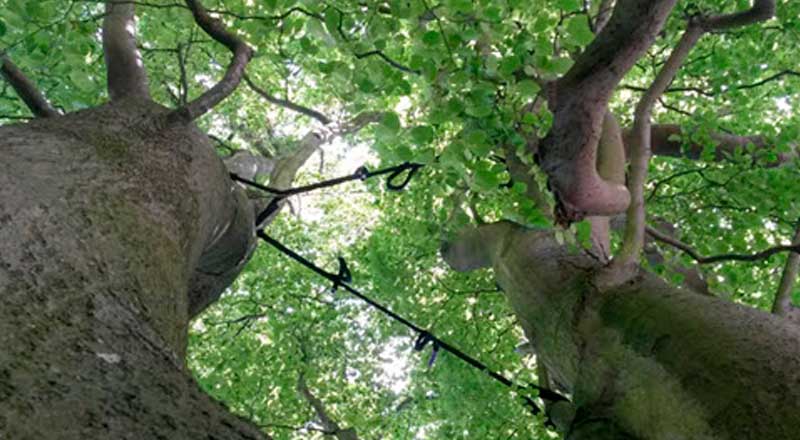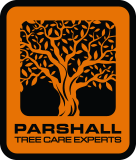
TREE SUPPORT SYSTEMS
pruning has been forgotten or ignored and weak trunk/branch structure is formed. The risk of structural failure, especially when there are nearby targets can be reduced and prevented with different tree support systems.
Your Urban Forest Arborist will make proper recommendations based on site-specific details, history of any past damage or failure, and tree species and vulnerability to failure.
There are different support systems recommended for each different situation that arises
Cabling – Cables are installed to restrict the distance that branches can move in relation to each other. Installed across a weak junction, they can greatly reduce the risk of failure. Installed on overextended branches, cables can carry some of the load when the branch moves excessively.
Bracing – Brace rods are used to reduce the risk of two or more leaders spreading apart or moving sideways in relation to each other. They are also used to fasten together a union or branch that is split or cracked.
Guying – Established trees are rarely guyed. However, there are a few cases in which installation of guys is appropriate – for example, trees that have been uprighted after being uprooted or blown over and trees with serious anchorage issues (either root defects or soil conditions that compromise anchorage).
Propping – Props are ridge structures installed between the ground and a branch or trunk to provide support from below. Props are used under branches or leaning trunks to keep the branch off the ground or a structure, to maintain clearance, or to reduce the potential for whole-tree failure.
